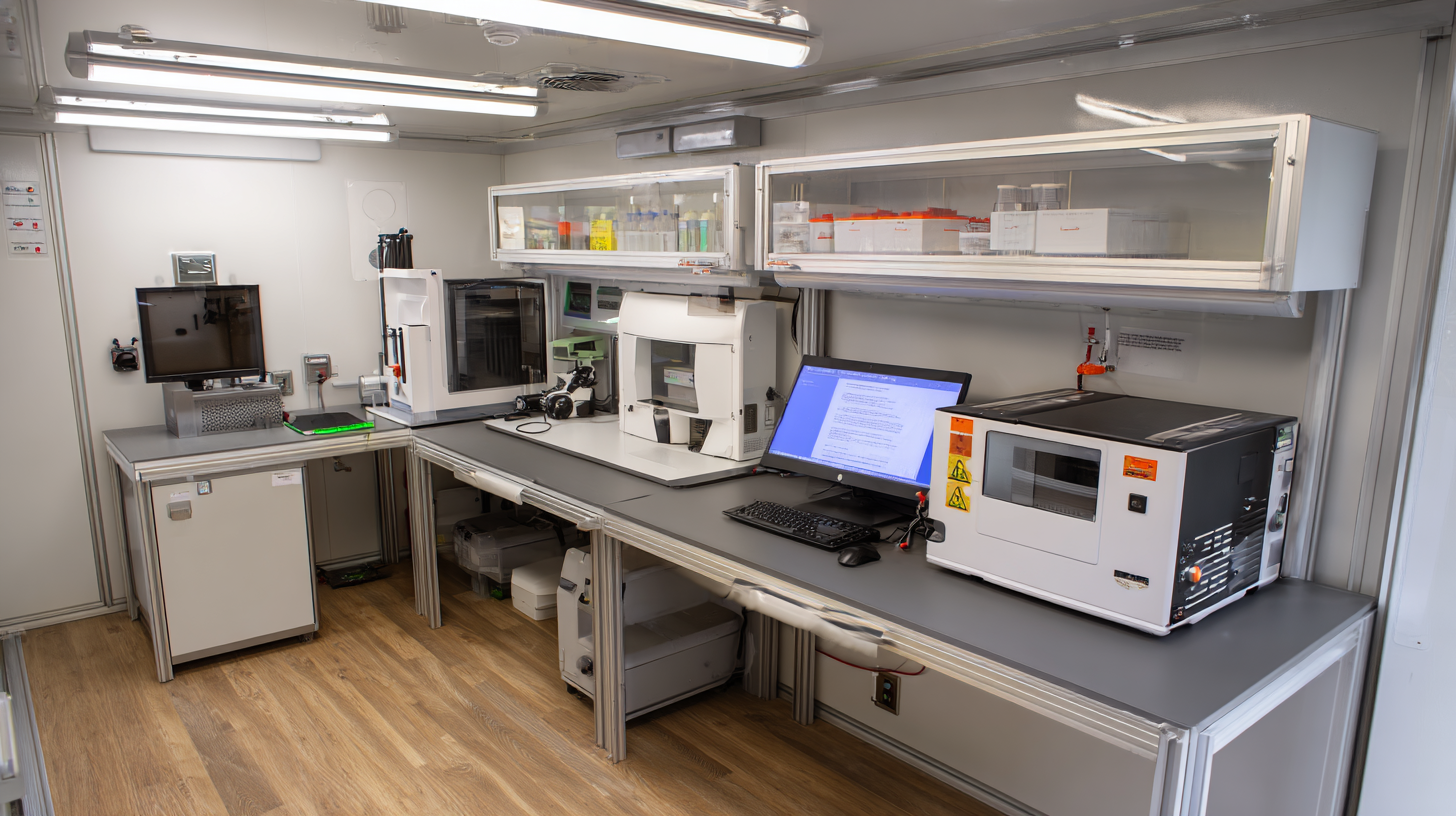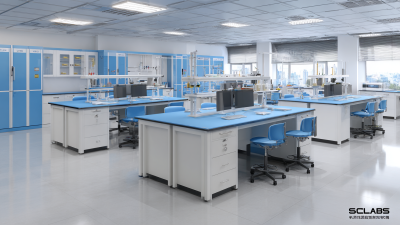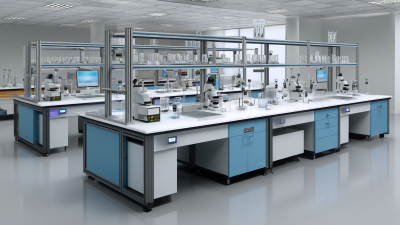In the fast-evolving landscape of mobile laboratories, setting up an efficient Mobile Lab Bench is crucial for maximizing workflow and productivity. Dr. Emily Carter, a leading expert in mobile laboratory solutions, emphasizes the importance of strategic organization: "A well-optimized Mobile Lab Bench can dramatically enhance a team's capability to perform tests swiftly and accurately." With the increased demand for on-site testing and analysis, professionals are turning their focus towards creating a workspace that not only meets their technical requirements but also fosters an environment conducive to innovation and precision.
Effective optimization of your Mobile Lab Bench involves thoughtful planning and a keen understanding of the essential elements that contribute to efficiency. By incorporating key strategies such as space management, equipment arrangement, and technology integration, lab personnel can streamline their processes while ensuring that all necessary tools are readily accessible. This article will provide ten essential tips to help you transform your Mobile Lab Bench into a powerhouse of efficiency, enabling you to respond swiftly to the demands of the field while maintaining the highest standards of quality and safety.

When configuring a mobile lab bench, maximizing space utilization is crucial for enhancing operational efficiency and productivity. Begin by assessing the dimensions of your mobile bench and strategically planning the layout of equipment and materials. Prioritizing essential tools and supplies will prevent overcrowding and ensure that everything you need is easily accessible. Consider vertical storage solutions, such as shelves or pegboards, to keep frequently used items within reach while maintaining a clear workspace.
In addition to vertical solutions, implement modular furniture designs that can be customized as your needs evolve. Folding tables or stackable storage containers can help adapt the space for different tasks without sacrificing functionality. Furthermore, organizing supplies by category and incorporating labeled storage options not only aids in locating items swiftly but also promotes a clean and clutter-free environment. By incorporating these space-saving strategies into your mobile lab bench setup, you will create a more efficient and effective working environment that can significantly enhance your lab operations.

When setting up a mobile lab bench, choosing the right equipment is crucial for achieving optimal workflow efficiency. According to a report by the National Institute of Standards and Technology (NIST), labs that utilize ergonomically designed workstations can increase productivity by up to 25%. This highlights the importance of selecting equipment that not only meets the specific needs of your experiments but also promotes ease of use and comfort. Integrating modular and mobile equipment allows for greater flexibility, enabling scientists to reconfigure their workspace based on project requirements without interrupting the workflow.
In addition to ergonomics, incorporating technology-enhanced tools can significantly impact data management and analysis speeds. A study published in the Journal of Laboratory Automation reveals that labs using automated systems for data collection and processing can increase their throughput by as much as 40%. This advancement underscores the importance of investing in quality instruments that support seamless integration with software solutions. Ultimately, ensuring that all pieces of equipment are compatible and work cohesively will facilitate a smoother workflow, reduce downtime, and allow researchers to focus on their scientific endeavors rather than troubleshooting equipment malfunctions.
A well-organized mobile lab bench is crucial for maximizing efficiency in any laboratory setting. The efficient management of lab supplies not only saves time but also reduces errors. According to a 2021 report by the National Institute of Standards and Technology (NIST), laboratories that adopted streamlined organization strategies observed a 30% increase in operational efficiency. This significant improvement underscores the necessity of implementing smart organization techniques tailored to the specific needs of your mobile lab environment.

One effective method is utilizing color-coded labeling systems for supplies, which has been shown to enhance retrieval speed and reduce misplacement incidents. Research by the Laboratory Efficiency Group indicates that labs employing such systems can decrease search times by up to 50%. Another strategy is to incorporate modular storage solutions, which allow for flexible arrangement based on usage frequency and item category. Doing so not only helps maintain order but also facilitates quick access to essential tools and reagents, leading to enhanced productivity during experimental procedures. By focusing on these organization strategies, laboratories can foster a more efficient workflow, aligning with best practices in laboratory management.
In today's fast-paced scientific environment, optimizing the mobile lab bench setup is crucial for enhancing mobility and accessibility. According to a report by the National Institutes of Health (NIH), research labs that prioritize mobility systems improve workload efficiency by up to 30%. This is essential not only for researchers working in dynamic settings but also for fostering collaboration across disciplines. A well-designed mobile lab bench can streamline the workflow, allowing scientists to move seamlessly between different tasks without unnecessary interruptions.
Accessibility is another key factor in optimizing lab setups. A study conducted by the Laboratory Equipment Manufacturer's Association (LEMA) found that ergonomic and accessible lab designs reduce physical strain on researchers, leading to a significant decrease in work-related injuries by approximately 25%. Incorporating adjustable heights, easy-to-move benches, and thoughtful organization of frequently used tools enhances both comfort and performance. By making these adjustments, laboratories can create an environment that not only supports the physical demands of research but also encourages creativity and innovation, ultimately pushing the boundaries of scientific discovery.
In today's fast-paced research environment, having an efficient mobile lab bench setup is crucial for productivity. Utilizing technology not only enhances data management but also streamlines analysis processes, leading to quicker insights and better decision-making. One of the key tips for optimizing your lab bench setup is to invest in mobile data collection devices that can seamlessly sync with your primary research software. This ensures that data is entered accurately in real-time, reducing the risk of errors commonly associated with manual entry.
Another important aspect is the use of cloud-based storage solutions. By ensuring your data is accessible from anywhere, team members can collaborate effectively, even when they are not physically present in the lab. Make sure to establish a clear file structure and naming convention to maintain organization. Additionally, incorporating analytical tools that can generate immediate visualizations of your data will facilitate faster interpretations and discussions among your team. These steps will not only improve efficiency but also enhance the quality of your research outcomes.






